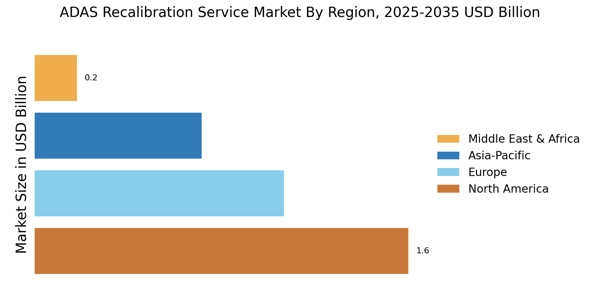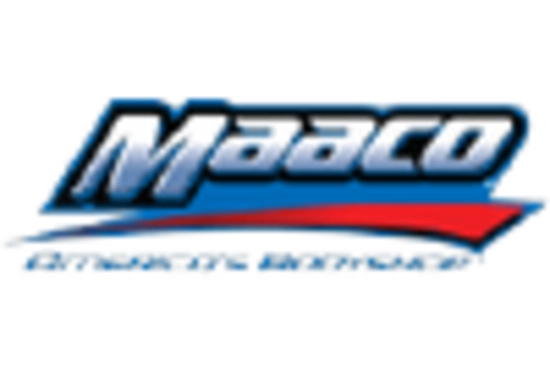Rising Regulatory Standards
Rising regulatory standards concerning vehicle safety and emissions are significantly impacting the ADAS Recalibration Service Market. Governments and regulatory bodies are increasingly mandating that vehicles equipped with ADAS undergo regular maintenance and recalibration to ensure compliance with safety standards. This regulatory push is expected to create a consistent demand for recalibration services, as vehicle owners and service providers strive to adhere to these requirements. For instance, certain regions have implemented strict guidelines that necessitate recalibration after any collision repair involving ADAS components. As these regulations become more widespread, the market for ADAS recalibration services is likely to expand, driven by the need for compliance and safety assurance.
Insurance Industry Influence
The insurance industry plays a pivotal role in shaping the ADAS Recalibration Service Market. As more vehicles are equipped with ADAS technologies, insurance companies are increasingly recognizing the value of these systems in reducing accident rates and claims. Insurers may incentivize policyholders to maintain their ADAS features through recalibration services, thereby fostering a culture of safety and compliance. Furthermore, data suggests that vehicles with ADAS features can lead to a reduction in collision claims by up to 30%. This correlation between ADAS technology and insurance benefits is likely to drive demand for recalibration services, as vehicle owners seek to ensure their systems are functioning optimally to benefit from lower premiums.
Increasing Vehicle Complexity
The rising complexity of modern vehicles, particularly those equipped with advanced driver-assistance systems (ADAS), is a primary driver for the ADAS Recalibration Service Market. As vehicles incorporate more sophisticated technologies, such as adaptive cruise control and lane-keeping assistance, the need for precise recalibration becomes critical. According to industry estimates, the number of vehicles with ADAS features is projected to reach over 50% by 2025. This trend necessitates specialized recalibration services to ensure that these systems function correctly after repairs or replacements. Consequently, the demand for ADAS recalibration services is likely to grow, as vehicle manufacturers and service providers recognize the importance of maintaining the integrity of these advanced systems.
Growth in Electric and Autonomous Vehicles
The surge in electric and autonomous vehicles is significantly influencing the ADAS Recalibration Service Market. As manufacturers increasingly focus on electric vehicles (EVs) and self-driving technology, the integration of ADAS features becomes more prevalent. Reports indicate that the market for electric vehicles is expected to expand rapidly, with projections suggesting that EV sales could account for 30% of total vehicle sales by 2030. This growth will likely drive the demand for recalibration services, as these vehicles often require specialized knowledge and equipment for proper maintenance. The complexity of autonomous systems further emphasizes the necessity for accurate recalibration, thereby creating a robust market for ADAS recalibration services.
Technological Innovations in Recalibration Tools
Technological innovations in recalibration tools and equipment are propelling the ADAS Recalibration Service Market forward. The development of advanced diagnostic tools and software solutions enables service providers to perform recalibrations more efficiently and accurately. Innovations such as mobile recalibration units and automated systems are becoming increasingly common, allowing for on-site services that enhance convenience for vehicle owners. As the market for these tools expands, service providers are likely to adopt new technologies to remain competitive. This trend not only improves service quality but also increases the overall demand for recalibration services, as more workshops invest in state-of-the-art equipment to meet the needs of modern vehicles.


















Leave a Comment